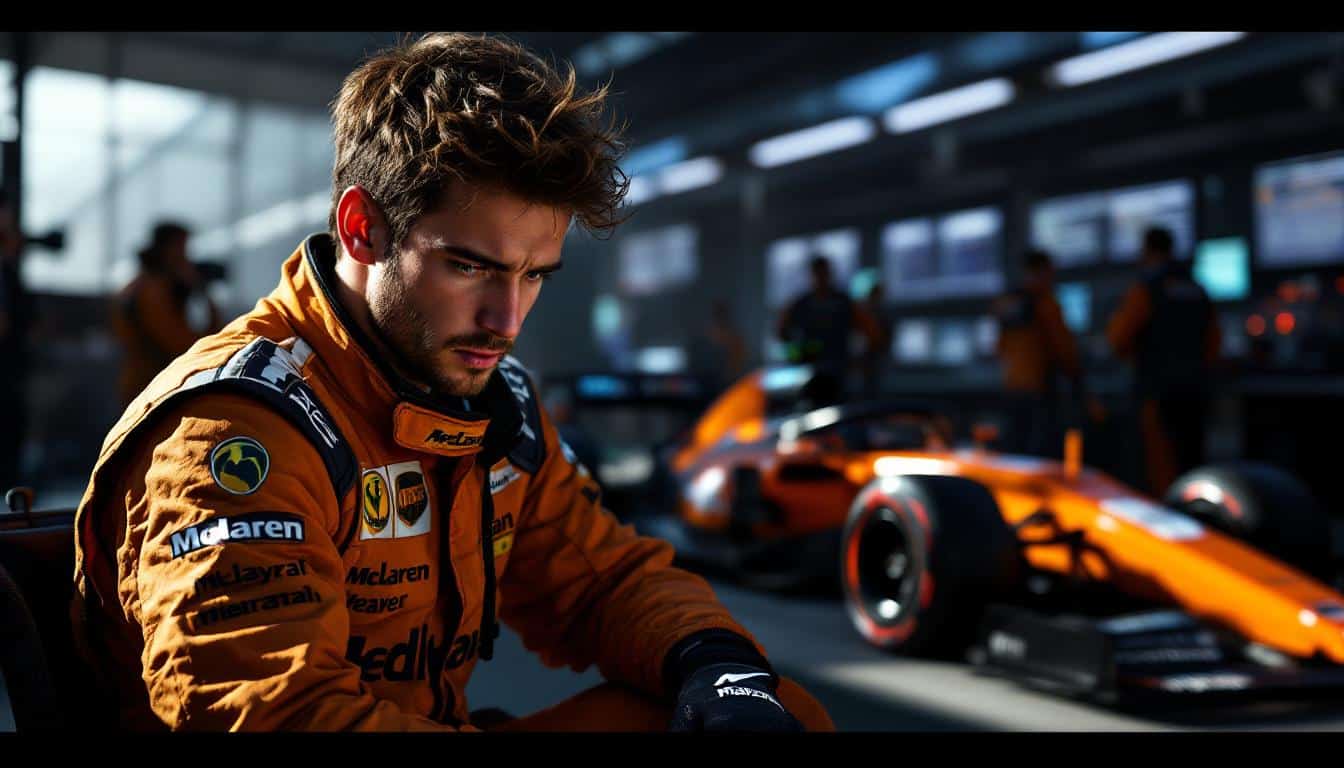In the world of Formula 1, tension and exhilaration intertwine on every lap of the race. When teammates become rivals, the stakes skyrocket, making every maneuver a potential thrill or disaster. The recent encounters between McLaren’s duo, Lando Norris and Oscar Piastri, showcase this phenomenon perfectly.
As the circuits wind through iconic tracks, the roar of engines ignites fierce competition. With recent races igniting passion and camaraderie — or rivalry — fans are left breathless. The Austrian Grand Prix became yet another chapter in the unfolding drama between these two talented drivers as they fought for supremacy. Their battle on the track not only captivated audiences but also prompted a reconsideration of the strategies and team dynamics within the McLaren garage. With every turn and every decision weighing heavily on their ambitions, the narrative of exhilarating competition continues to develop.

Oscar Piastri expresses regret for testing the limits of McLaren’s ‘Papaya Rules’
In the high-octane world of Formula 1, where speed and precision rule the roost, the fine line between ambition and recklessness often comes into play. Recently, Oscar Piastri, the rising star from the McLaren team, found himself at the center of a heated discussion following an intense dual with his teammate, Lando Norris. The incident stirred the waters as Piastri expressed visible regret for pushing the boundaries of McLaren’s so-called ‘Papaya Rules‘, which are designed to govern how the team operates in crucial racing situations, ensuring both competitiveness and safety.
After a thrilling Canadian Grand Prix, Piastri’s maneuvering alongside Norris was under scrutiny. He nearly collided with his teammate while battling for position. In the aftermath, Piastri expressed regret over his actions, acknowledging the need to respect the established protocols that govern team interactions — something he understands as crucial in maintaining harmony within the team while also fighting for the top spot on the podium. The Papaya Rules were born out of necessity, aimed at harmonizing competition among teammates while minimizing the risks inherent in pushing each other too hard.
What are McLaren’s ‘Papaya Rules’?
The ‘Papaya Rules‘ were formulated as a response to the increasing intensity of internal competition within the McLaren team. Designed to foster an environment of cooperation, they lay down guidelines that dictate how drivers can race each other without jeopardizing their safety or that of the team’s overall performance. These rules are not merely regulations but a statement of McLaren’s philosophy, echoing their commitment to promote talent while ensuring that racing remains clean and fair.
At the essence of the Papaya Rules is a framework that allows for competitive racing amongst teammates, while also emphasizing the importance of respecting each other’s space on the track. This became especially evident during the recent races when Piastri, getting carried away in the heat of competition, had a moment of misjudgment at Turn 4 in Austria. His lock-up nearly led to an unfortunate clash with Norris, prompting his race engineer to remind them of the need to consider their actions carefully.
The team principal, Andrea Stella, lauded both drivers for their sportsmanship and competitive spirit—he highlighted that this was the very essence of McLaren’s racing philosophy. The underlying objective is not just to win races but to develop a culture of mutual respect and cooperation amongst the drivers that transcends the competition. As Piastri noted, “We want to race each other to fight for wins, but there needs to be an understanding of limits.”
Oscar Piastri’s reflections on his actions
In the immediate aftermath of the Austrian Grand Prix, Piastri took a moment to reflect on his racing tactics. “It was an intense battle,” he remarked after securing a second place finish behind Norris. “I hope it was good watching because it was hard work from the car.” This perspective showcases his drive and ambition but also highlights a layer of maturity that belies his young age. He expressed that racing at the limits, while exhilarating, comes with its share of risks.
Piastri’s admission of fault was telling. After the race, he publicly acknowledged his lock-up at Turn 4, which brought him dangerously close to colliding with Norris. His quick apology via radio, saying, “sorry for the situation in corner four. My bad. I know what I have to do,” demonstrated not only sportsmanship but an understanding that racing ethics are paramount, especially within the same team. It’s a testament to the culture McLaren aims to instill through its Papaya Rules and a realization that maintaining the integrity of the team should take precedence over personal glory. In the competitive realm of Formula 1, where every opportunity counts, it takes a steady hand and a composed mind to drive with both ambition and restraint.
The significance of teamwork in racing
Team dynamics in Formula 1 can often make or break the season. While drivers are primarily seen as individual competitors, their performance is directly linked to their capability to work alongside and respect their points of competition — their teammates. The incident involving Piastri and Norris brought to light the essential need for collaboration, especially in a time where teams are vying for every point on the leaderboard.
The introduction of the Papaya Rules embodies McLaren’s strategy to promote teamwork amidst fierce rivalry. By ensuring that drivers communicate and adhere to protocols, the team not only protects its assets but also builds a formidable two-driver strategy against rival teams. McLaren’s ability to field two competitive cars is a strength, but it must be nurtured through conscious efforts to ensure all team members are aligned toward shared goals.
Andrea Stella emphasized after the race that he was proud of how the two drivers conducted themselves. “We want to give our two drivers the possibility to express their talent, but this needs to be done within the principles and the approach that we have contributed to build together with our drivers.” His words resonate with the spirit of cooperation; understanding that the ultimate goal is not just to compete but to grow together as a unit.
Additionally, teamwork extends beyond merely respecting one another’s space on the track. Effective communication between drivers and their teams is crucial. Understanding the strategies involved in pit stops, tire management, and race tactics can help drivers to perform better not only as individuals but as a cohesive unit. The lesson is pivotal — racing is about more than just speed; it’s about collaboration.
What lies ahead for Piastri and McLaren?
Looking toward the future, both Piastri and Norris have a lot to prove, but they must do so while adhering to the spirit of the Papaya Rules. Racing isn’t just about skill—it’s about learning and growing from mishaps. Piastri’s experience has made him more aware of the boundaries he must navigate when racing with a teammate. This nuance is essential in preserving both personal ambitions and the team’s integrity.
As McLaren aims to reestablish its dominance in Formula 1, nurturing young talents like Piastri will be crucial. His slight misstep in Austria will not define his career but rather is a learning opportunity for the Australian driver. The evolution of his driving style, coupled with McLaren’s supportive environment, sets the scene for a potentially exciting and impactful season ahead.
The real challenge for McLaren will be evolving as a team while still ensuring that each driver feels empowered to express themselves within the race strategies. As Piastri continues to learn the ropes, he will undoubtedly bring a fresh energy to the track, a quality that won’t go unnoticed in the cutthroat world of Formula 1.
Having navigated through both triumphs and tribulations, Oscar Piastri exemplifies what it means to be a true racer — one who is ready to face the challenges ahead with resilience, reflection, and respect for the sport. The journey promises to be thrilling, one where teamwork, ethical racing, and the essence of the Papaya Rules will guide their way forward.


